The UK is a must-see destination, with its blend of historical gems, vibrant cities and awe-inspiring landscapes. Made up of England, Scotland, Wales and Northern Ireland, you’ll quickly notice that the United Kingdom has a diverse collection of cultures.
With each season bringing its own charm, it’s hard to choose when to visit. From the colourful blossom of spring to the orange glow of autumn, you’ll find the UK has year-round appeal.
When deciding the best time to visit the UK, it helps to think about what you want to do on your trip. Perhaps you’d like to venture into the countryside, with the warm sunlight shining down on the green, pristine landscape.
Instead, you might want to stroll cobbled streets in autumn, stopping by traditional British pubs to soak up the cosy atmosphere.
Keep reading to discover the best time of year to visit the UK. You’ll learn which months are quietest, what sort of weather to expect, and the special events you can attend throughout the year.
- Discover Great Britain with these top vacation packages in the UK

Why you should visit the UK between April and October
Of course, you can lap up the rich history, varied landscapes and culture in the UK at any time of year. But the period between spring and autumn is the best time to travel to the UK.
Summer – June to August – is the peak time for visitors to the UK. However, there are plenty of reasons to come during the shoulder season too.
Compared to summer, spring and autumn in the UK are a little quieter, with fewer visitors around. You’ll also get to savour the beauty of iconic UK landmarks without the cold winter weather.
Read on for 3 reasons why April to October is the best time to go to the UK.
1. Longer days and warmer weather
Thanks to the UK’s northerly location, the day length varies throughout the year. You’ll experience the longest days between April and October, making it easier to see more each day.
The shortest day of the year – the winter solstice – is in mid-December, with 7.5 hours of daylight. From then, the average length of daylight increases daily until June.
The longest day of the year – the summer solstice – is in mid-June, with around 16.5 hours of daylight. The days are even longer up in Scotland, as it’s closer to the North Pole. Starting in March, there’s Daylight Savings Time. This is when the clocks go forward an hour, giving you an even later sunset.
The weather is also the best between April and October, with more sunny days and less rain.
- Learn more about Scottish weather throughout the year
- Find your ideal tour of some of the top UK sights
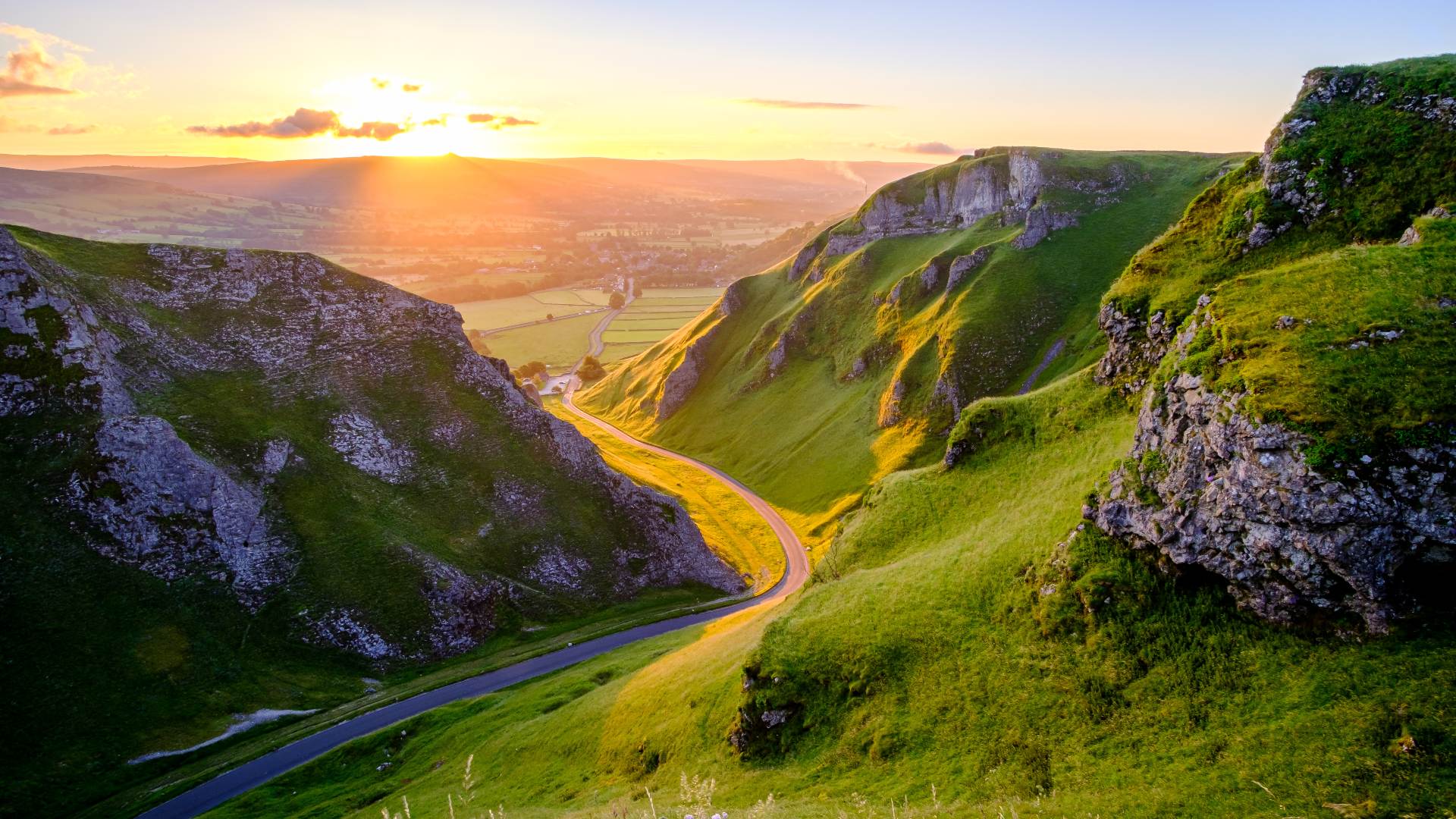
2. Wildlife and nature
As the name suggests, springtime is when nature jumps into high gear. With both plant and animal life flourishing, it’s the ideal time of year to connect with the scenery.
In spring, you can admire the green rolling hills, dotted with lambs which fill the fields during lambing season. You could see pink cherry blossoms and yellow daffodils even in towns and cities, or woodlands and meadows brimming with bluebells and buttercups.
It’s a good time to visit England to see the blossoming grand parks, like Kew Gardens in London.
In summer, you’ll feel an excitable buzz in the air as locals and visitors make the most of the warm sunshine. Go for a stroll in the countryside to be treated to sights of wild rabbits, squirrels and birds.
Whereas in autumn you’ll step into an entirely different scene. As summer fades, the greenery bursts into bright oranges, reds and golds.
- See the UK bloom in springtime on a tour from London
- Related: Best time to visit Scotland – Your complete guide
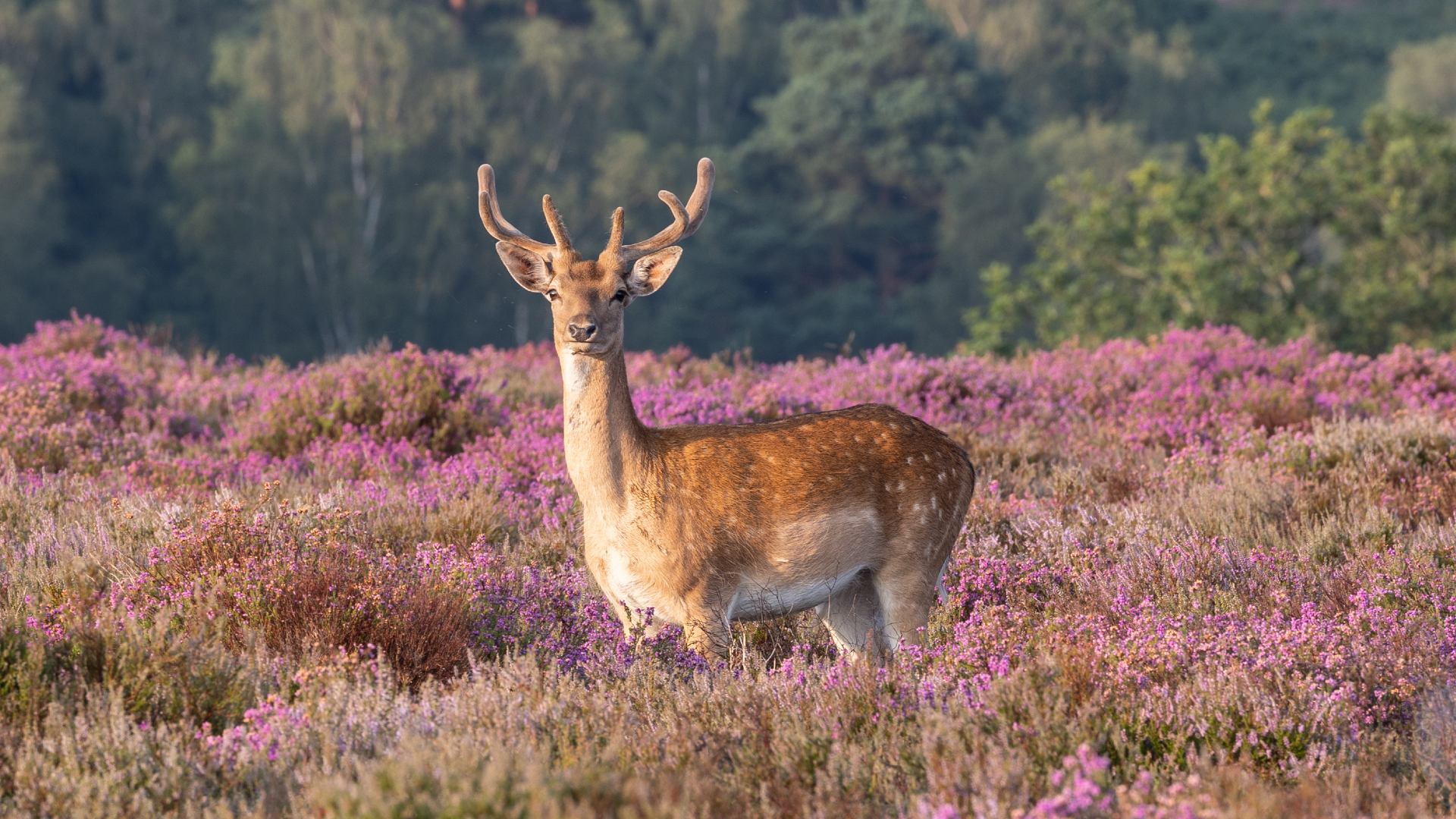
3. Plenty of festivals to take part in
Between April and October, you’ll see music festivals and fairs offering up delicious local food, produce and handmade crafts. The atmosphere is bubbly and communal, as locals and visitors gather to shop, socialise and enjoy the pleasant weather.
-
Explore the Celtic nation and check out self-drive tours in Scotland - Related: Top things to see and do in the UK
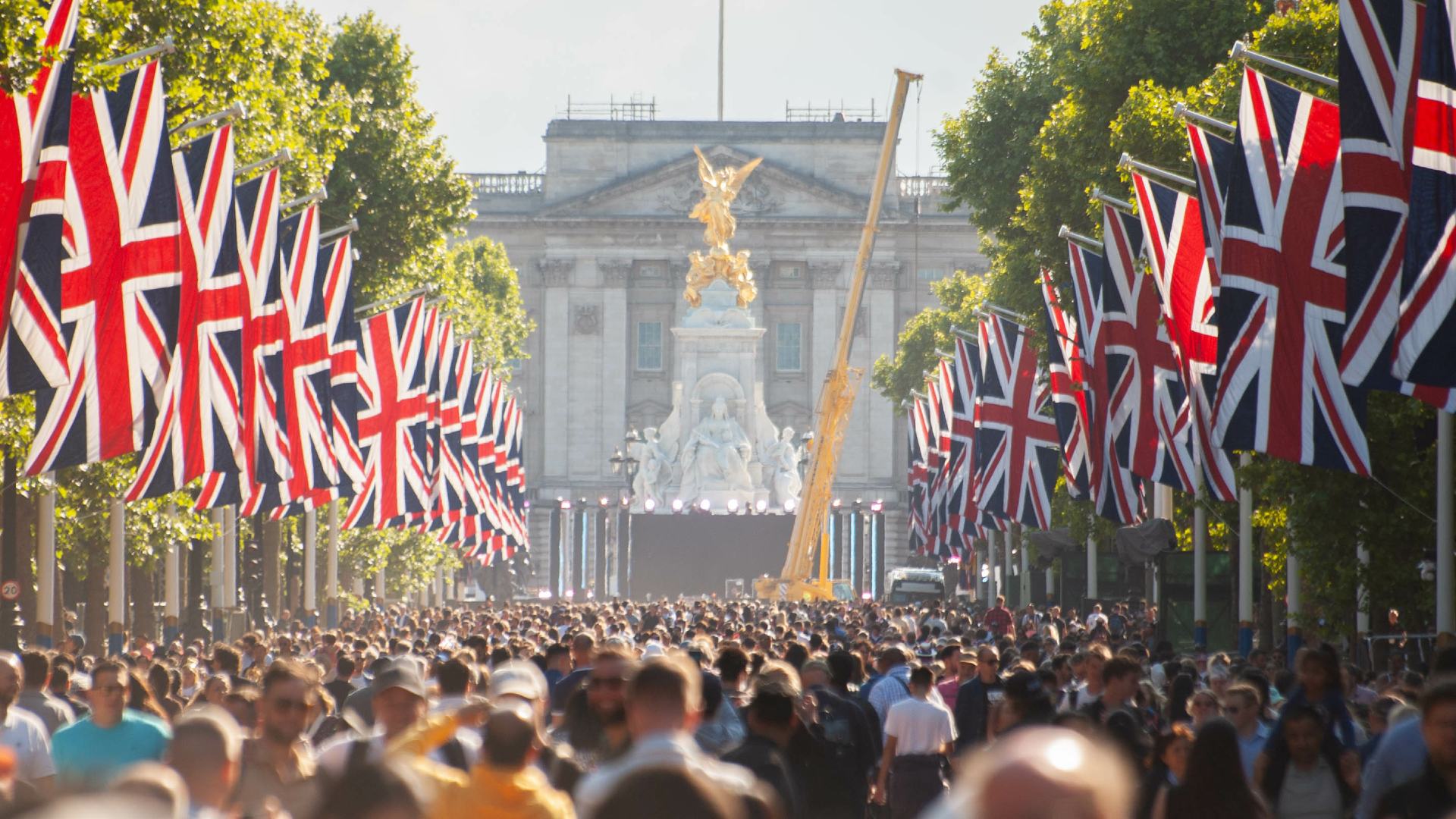
Keep reading to find out more about each of the seasons and learn which might be the perfect time of year for you.
Spring
In the UK, spring usually takes place from April to May.
What’s the weather like in spring?
In Scotland, the average temperature in April and May is between 7-13°C (45-55°F). England and Wales are slightly warmer, with the average temperature between 7-18°C (45-64°F).
How many daylight hours are there?
The average daylight hours are between 14-16, with longer days the further north you are.
In central Scotland and Northern Ireland, you’ll have around 16 hours of daylight, with the sun setting at around 9-9:30 PM.
In England and Wales, you’ll have around 14-15 hours of daylight, with the sun setting between 8:30-9 PM.
What’s spring like in the UK?
Spring in the UK is around mid-March to May. The winter chill in the air fades, trees blossom and the days become longer. The landscape comes alive in colour and the wildlife comes out of winter hibernation.
It’s worth bearing in mind that most of the UK’s bank holiday weekends are in spring. Although this means you’ll experience a lively atmosphere, it also might make popular attractions busier.
- Soaking up the sights on a self-drive tour of the UK
- Related: Why you should spend next spring or autumn in Scotland
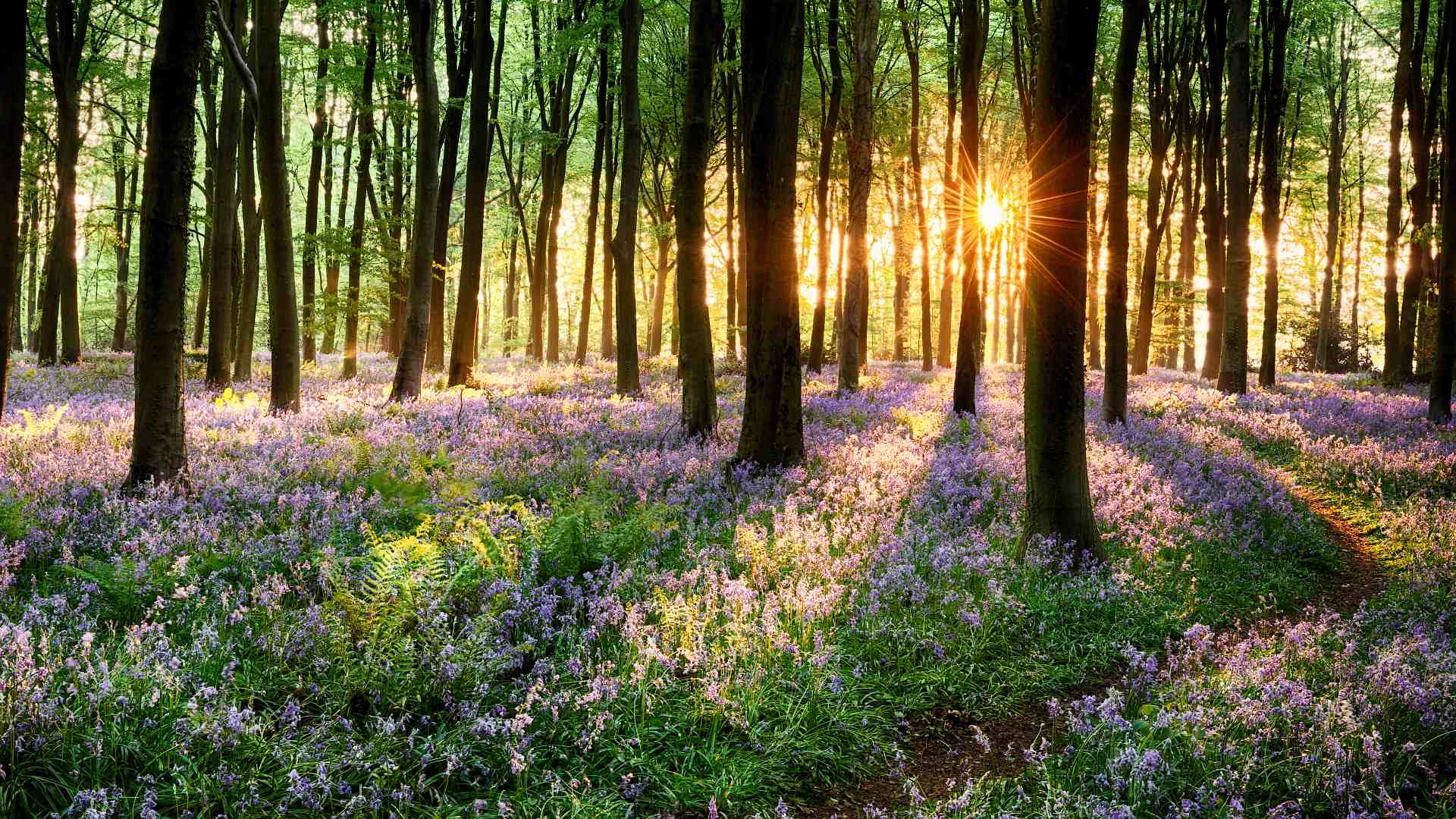
Summer
Summer usually spans over June, July and August in the UK.
What’s the weather like in summer?
Summer is the warmest time of year in the UK. The average temperature ranges from 9-18°C (48-64°F).
Generally, you’ll experience hotter weather the further south you are in the UK.
The average maximum temperature in Scotland in July is between 15-17 °C (59-63°F), whereas in England it’s around 21°C (70°F).
How many daylight hours are there?
You’ll be treated to long days with late sunsets in the UK throughout summer. However, it’s worth noting that the length of the day depends on what part of the UK you’re in.
In central Scotland in June, the sun rises at around 4:30 AM and sets at 10 PM. In London, the sun rises at around 4:30 AM and sets at 9 PM.
This means you’ll get between 16 and 18 hours of daylight in the UK during summer.
What’s summer like in the UK?
Summer is a good time to visit the UK and there’s an excitable buzz in the air. The coast is warm and inviting, and towns become hubs for relaxed, al fresco dining. Everyone is keen to make the most of the long, sunny days and enjoy the charms of the UK.
- Related: Best places to visit in the UK
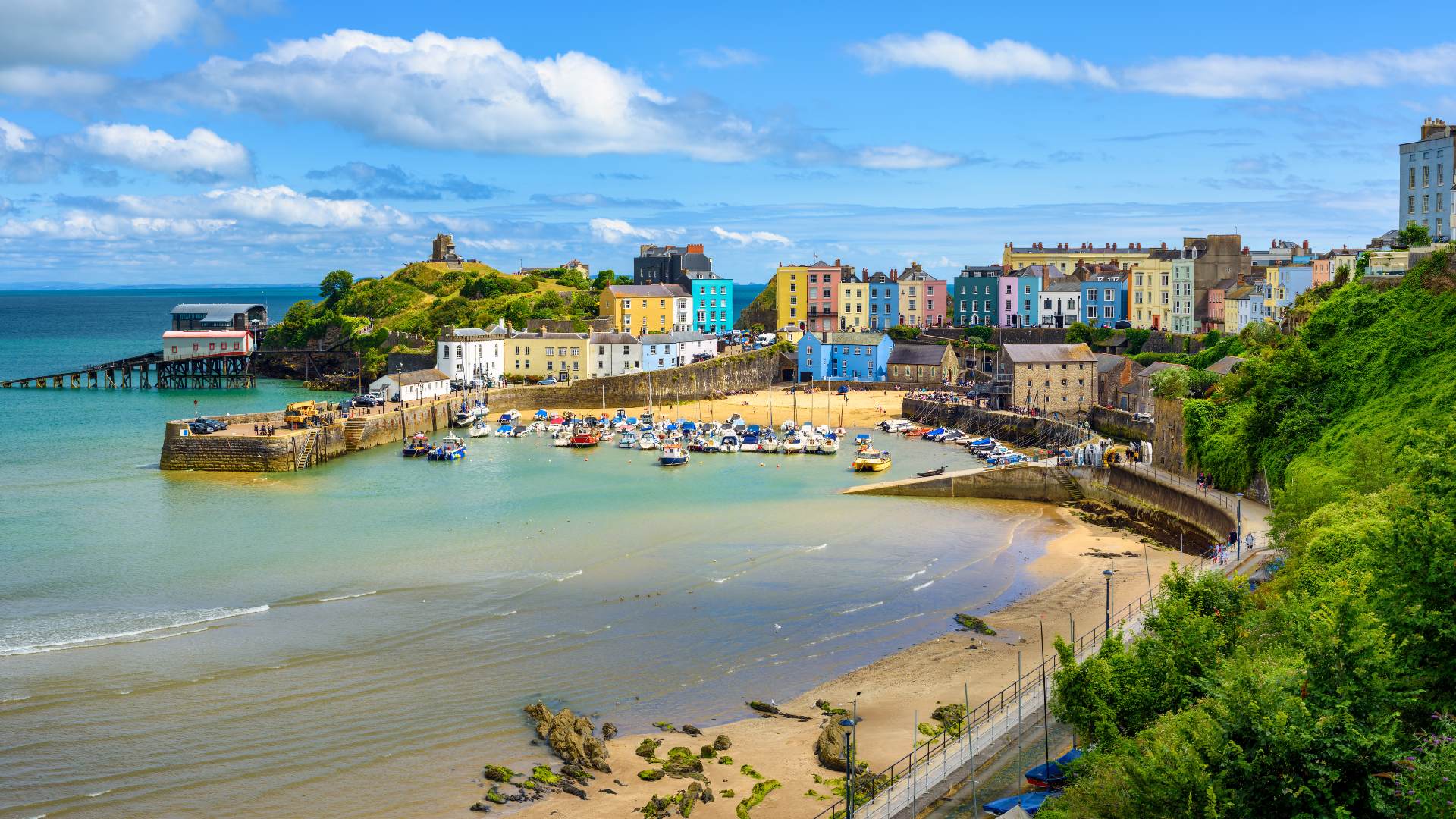
Autumn
Autumn tends to start in September and end in November.
What’s the weather like in autumn?
Autumn weather is similar to spring, with an average temperature between 8-15°C (46-59°F) in Scotland. And in London, the temperature is usually 13-20°C (55-68°F). The temperature gradually starts to drop, the leaves change colour and the days begin to shorten.
How many daylight hours are there?
The day length is still long during autumn, with 8-11.5 hours of daylight in central Scotland. And in London, you’ll get between 8.5-12.5 hours of daylight per day. Daylight Savings Time finishes at the end of October and the clocks go back one hour. Although this makes the sun set earlier, it also means an earlier sunrise.
What’s autumn like in the UK?
Autumn also falls into the quieter shoulder season. It’s a visually stunning time to visit the UK, as the countryside foliage turns orange and red.
You’ll get to see some of the most breathtaking scenery during autumn. For example, you could travel to England in September and October to see the Lake District’s mountains (or “fells”) covered in bright golden trees.
- See dreamy foliage on a tour of England, Scotland and Ireland
- Related: Visiting the UK – Travel tips from a local expert
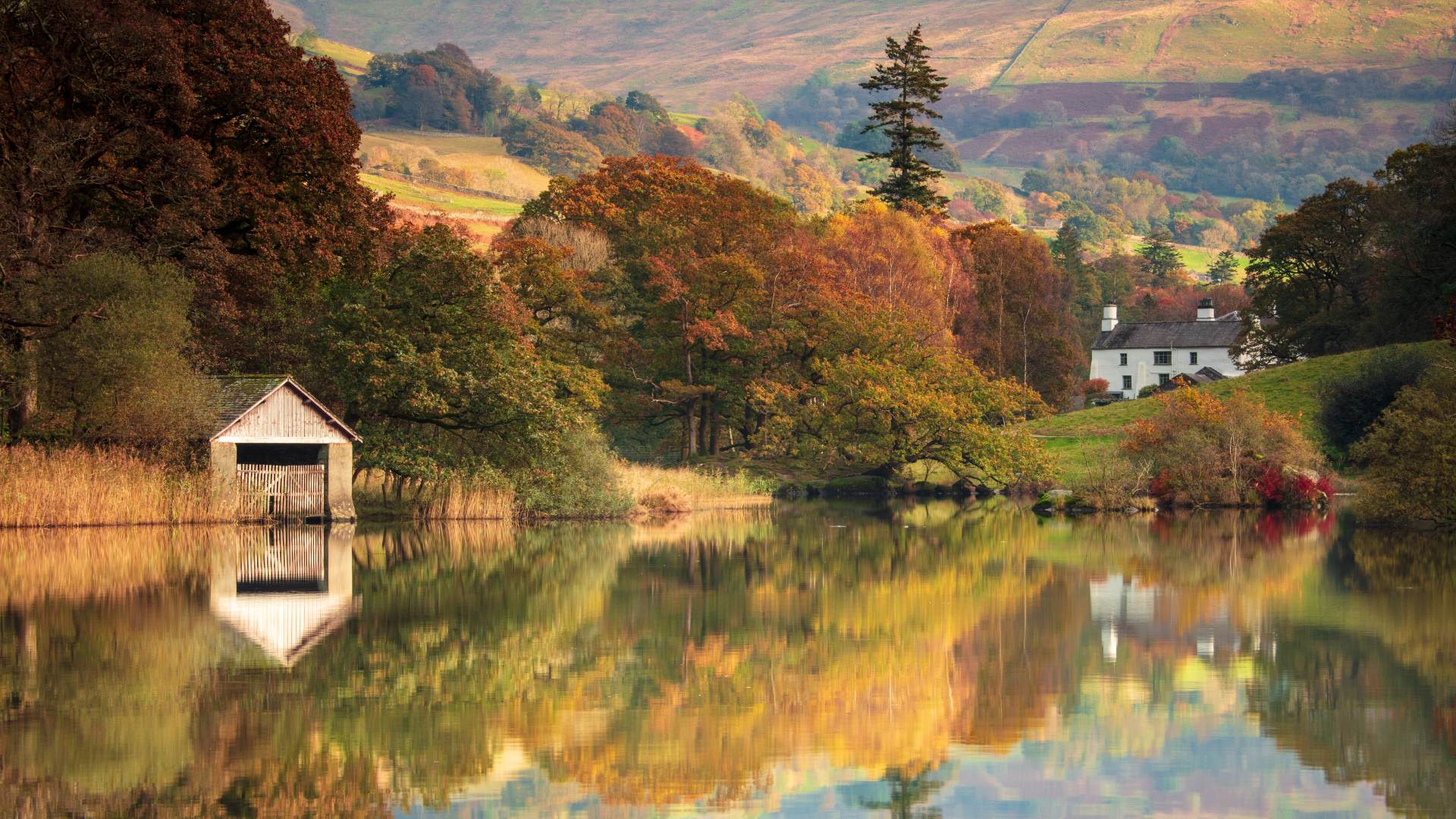
Winter
Stretching from November to March, the winter days are short and the air is cool and crisp.
What’s the weather like in winter?
The UK is relatively wet and chilly during winter, with some snowy showers in hilly areas. The average temperature in winter is from 2-7°C (36-45°F).
How many daylight hours are there?
The days are significantly shorter during winter, with an average sunset time of 4 PM. The fewer hours of daylight mean you’ll have less time to explore the outdoors. But you can soak up the warm atmosphere in local pubs and restaurants instead.
What’s winter like in the UK?
The UK’s reputation for rain is well-known and this is especially true for winter.
Despite this, winter can be an enchanting time to visit the UK, with frost-coated trees, snowy hills and imposing castles. It’s also the quietest time of year, so you could explore top sights in a peaceful setting.
Some of the biggest events happen in the UK during winter. For example, you could visit one of the many Christmas markets in all major cities in the UK. Or you could attend some of the biggest celebrations, like Guy Fawkes Night (Bonfire Night), the London New Year’s Day Parade and St Patrick’s Day.
- Take a winter tour in Scotland and see the frosty landscape
- Related: How to celebrate Christmas in Scotland
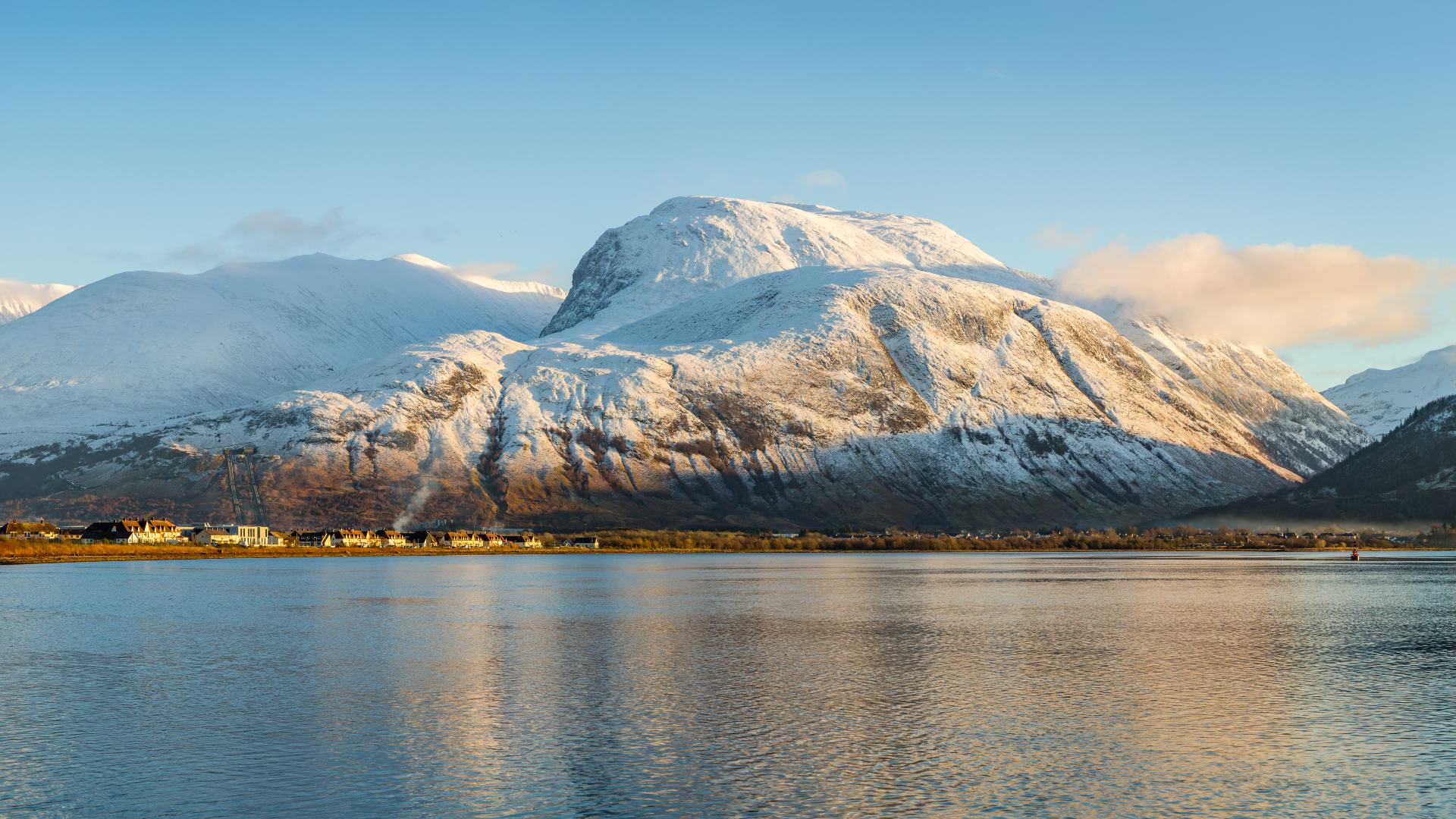
What’s the best time of year for festivals in the UK?
Between April and October, the UK has a lot more going on in terms of festivals and celebrations. Thanks to the warmer weather, outdoor events are hosted all across the UK.
1. The RHS Chelsea Flower Show – May
May is a great time to visit London because you can attend the Chelsea Flower Show. Hosted every year since 1913 by the Royal Horticultural Society, you’ll see breathtaking floral displays and unusual garden designs.
The show attracts gardeners from all over the UK, giving them a rare opportunity to showcase their creative ideas and high-quality produce.
Plus, it’s a tradition that members of the royal family visit the show each year. So you might get lucky enough to see one of the British monarchs here.
Either way, you’ll certainly leave the show inspired, with some fresh ideas for your garden.
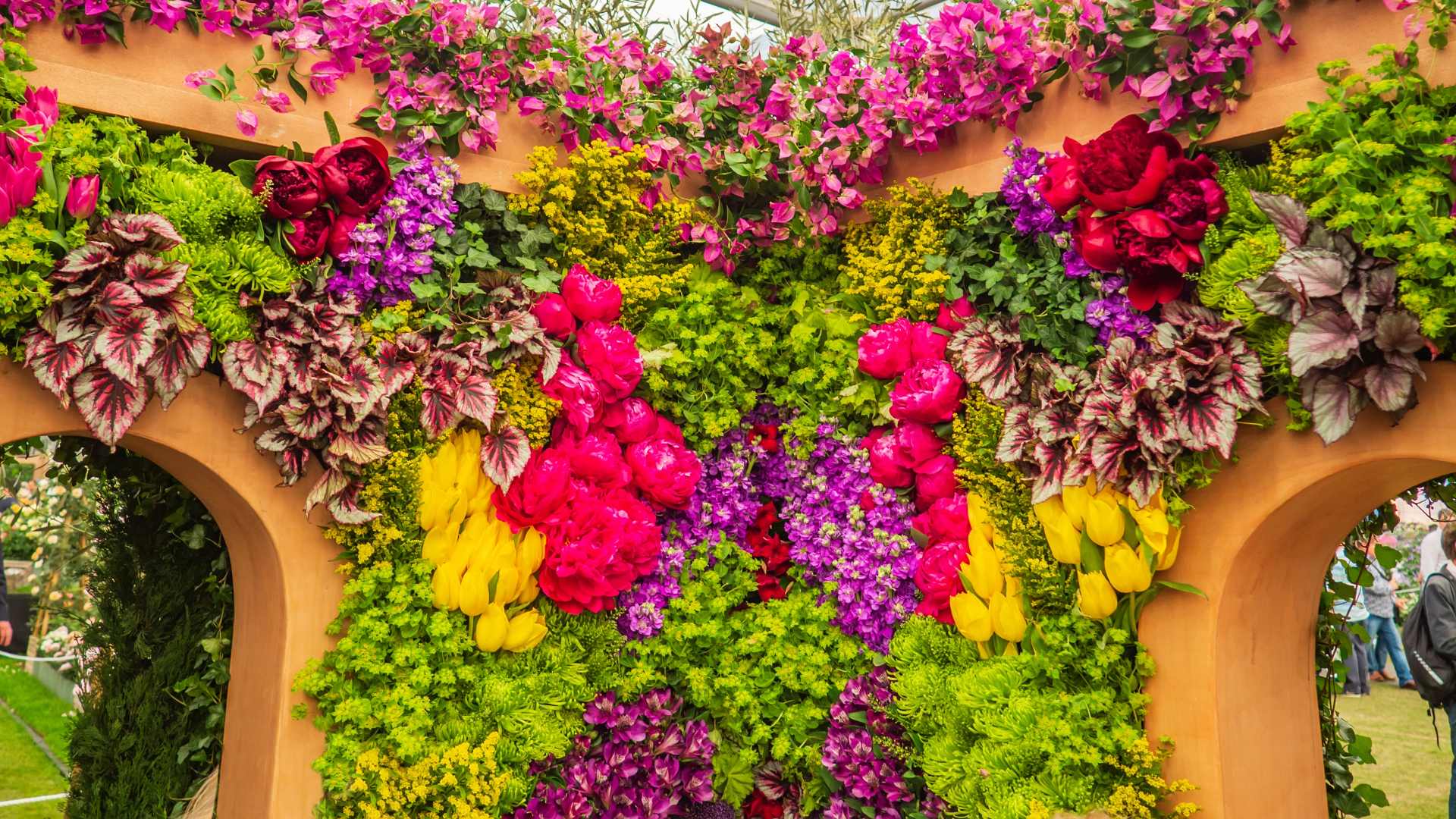
2. Edinburgh Fringe Festival – August
Visit the Scottish capital during August to join the world’s largest performance art festival. For the entire month, Edinburgh hosts thousands of comedy, musical and dance performances.
You can spontaneously try out a few shows, or pre-book to schedule several per day for a jam-packed Edinburgh Fringe itinerary. Whichever way you plan your experience, get ready to immerse yourself in this bustling arts festival!
-
Take a summer tour in Scotland and experience the festivities for yourself - Related: Best festivals & events in Scotland
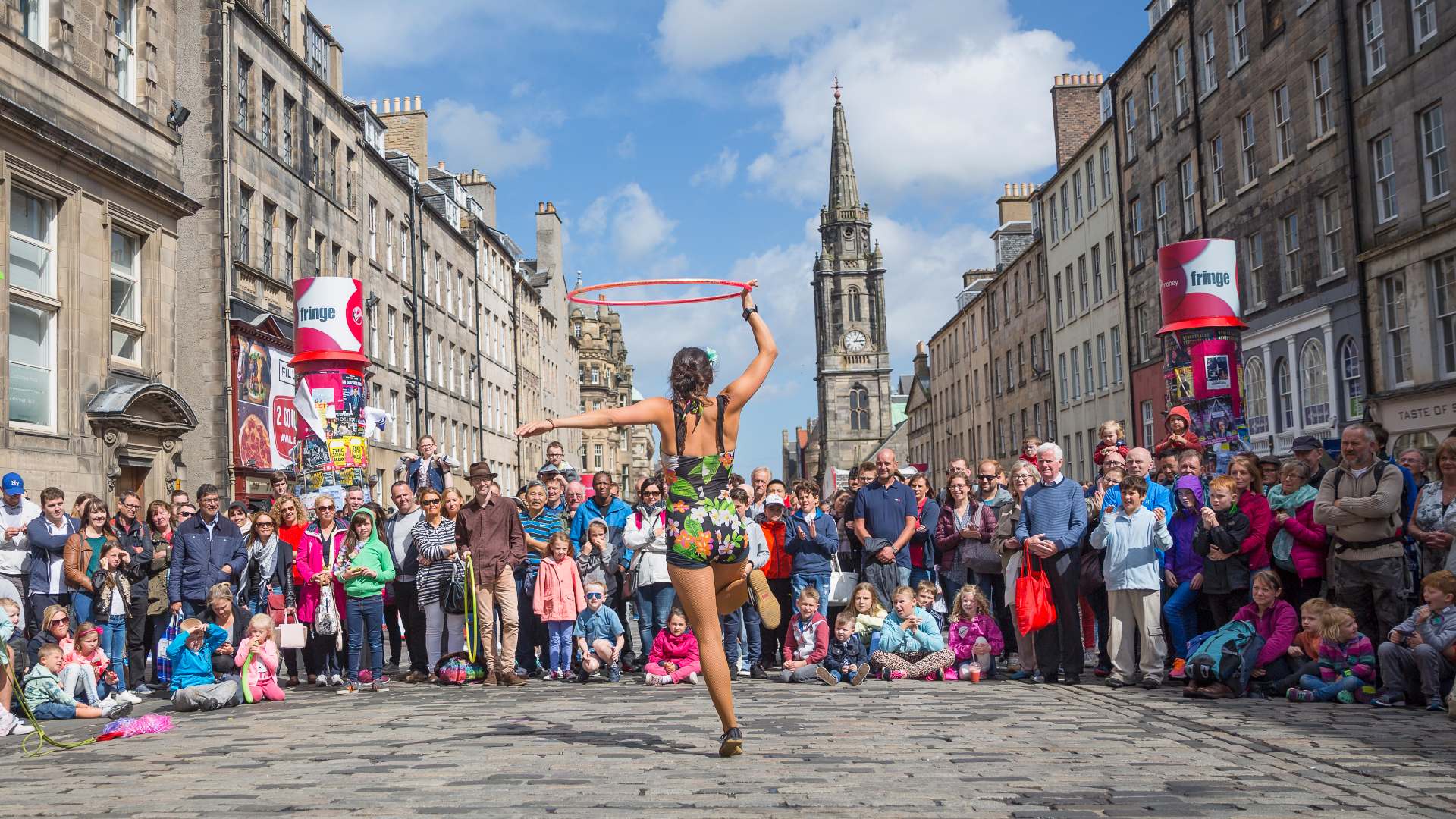
3. Highland Games – May to September
Between May and October, you can attend the Highland Games in Scotland. These events draw visitors from around the world.
For example, you could head to Peebles in the Scottish borders and join in traditional festivities. Think Highland dancing and of course some impressive field sports.
During the Highland Games, competitors showcase their physical strength. You’ll see events like the caber toss, where participants pick up and flip over a large wooden trunk. There’s also a thrilling game of tug of war and the hammer throw.
- Join in on the fesitivites on a guided small group tour of the UK
- Related: 10 Cool Scottish facts
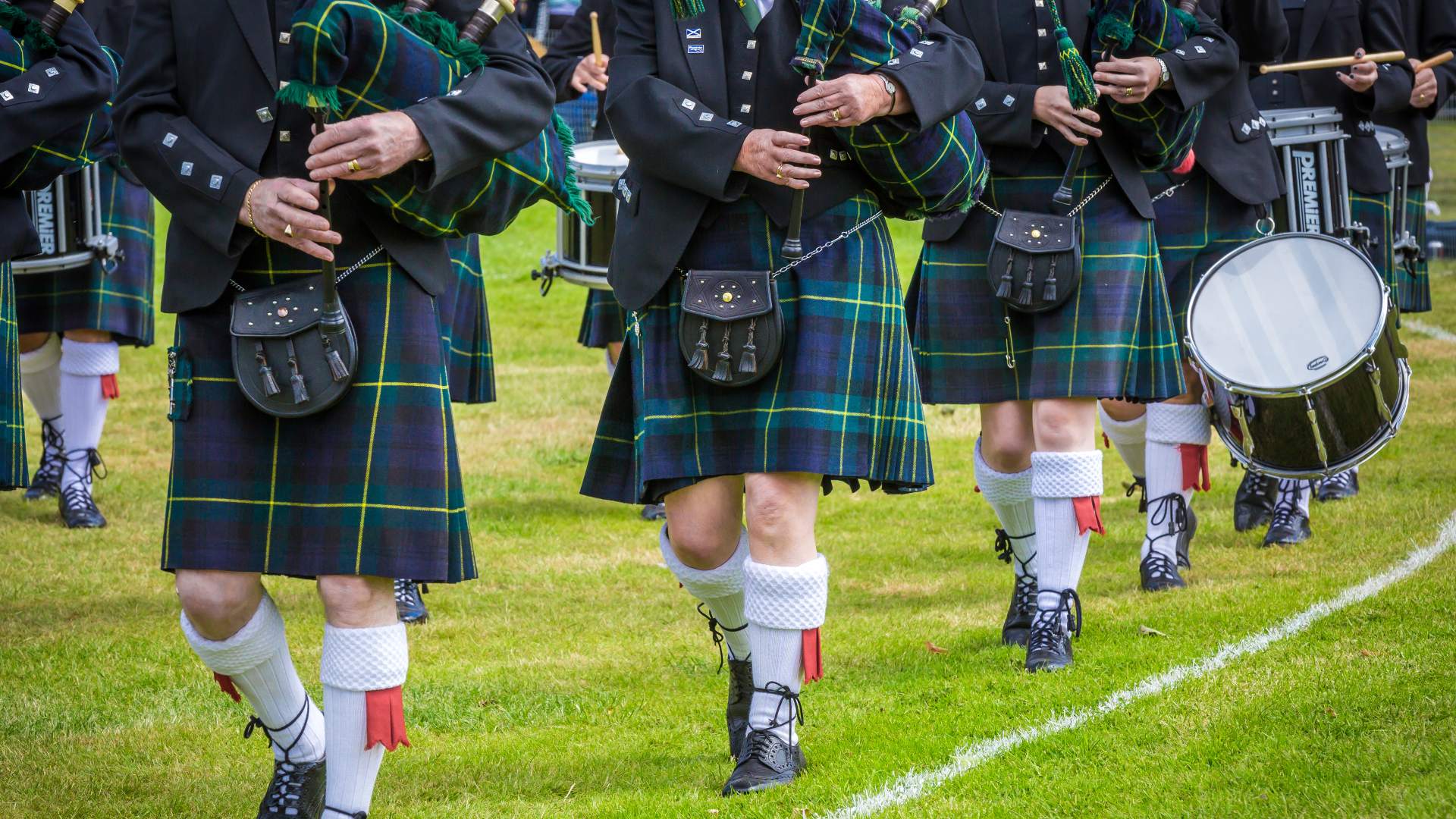
Discover the UK
Fortunately, there’s no bad time to visit the UK. Each season brings with it different weather, landscapes and special celebrations. This means you can have an unforgettable trip regardless of when you visit.
If you’re keen to start planning your dream getaway, choose from these bestselling UK vacations and Nordic Visitor will take care of it all for you. We’ll book your accommodation, local transport and excursions, meaning you can relax and look forward to your adventure.
Get in touch with one of our Edinburgh-based travel experts to begin curating your trip to the UK.
